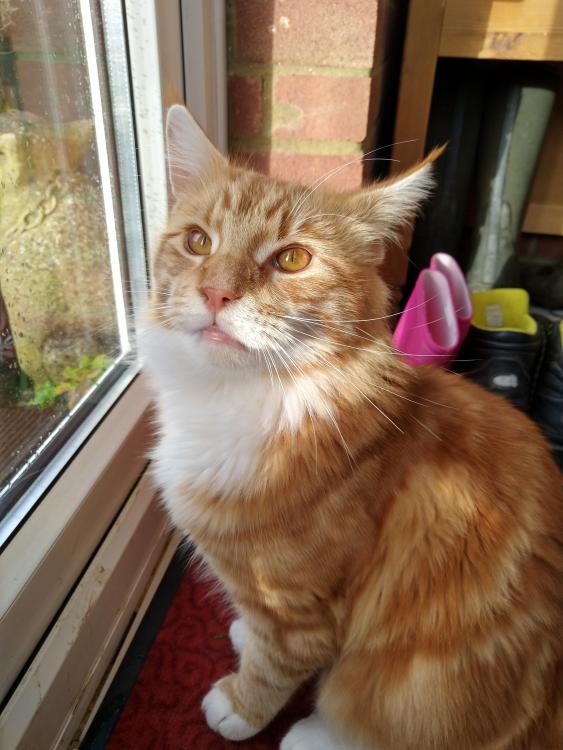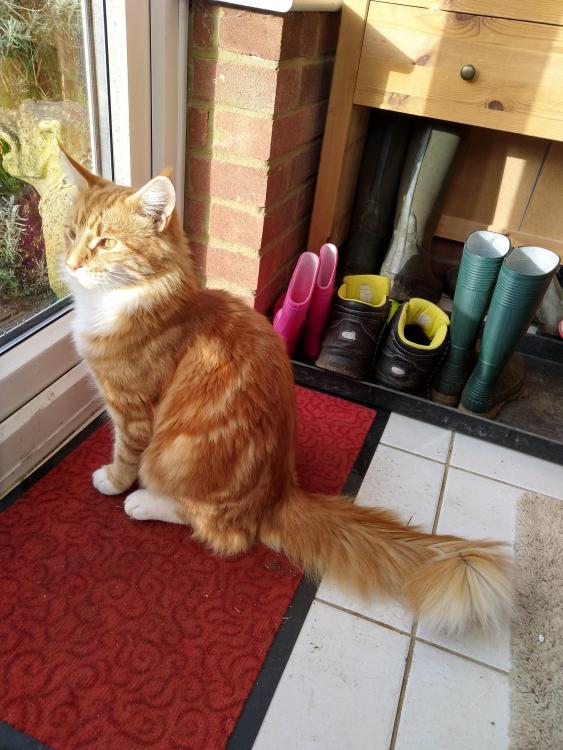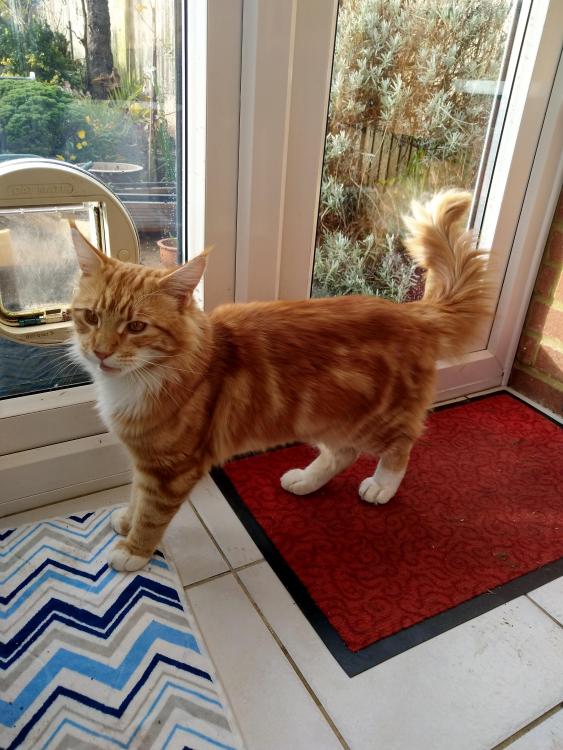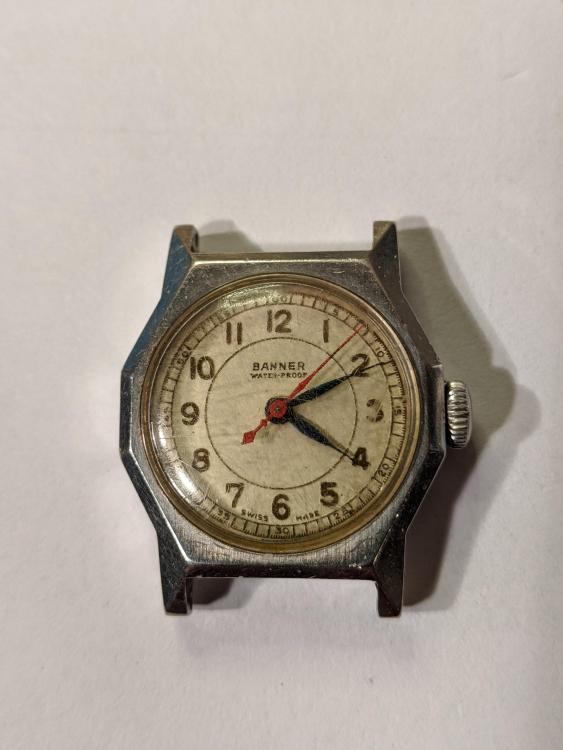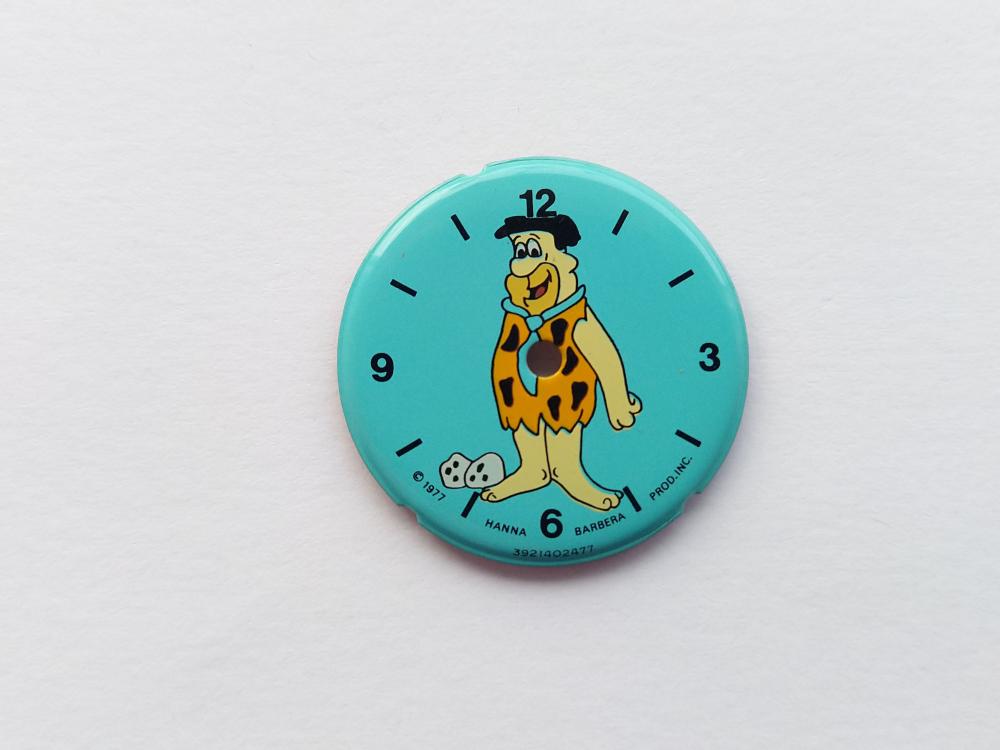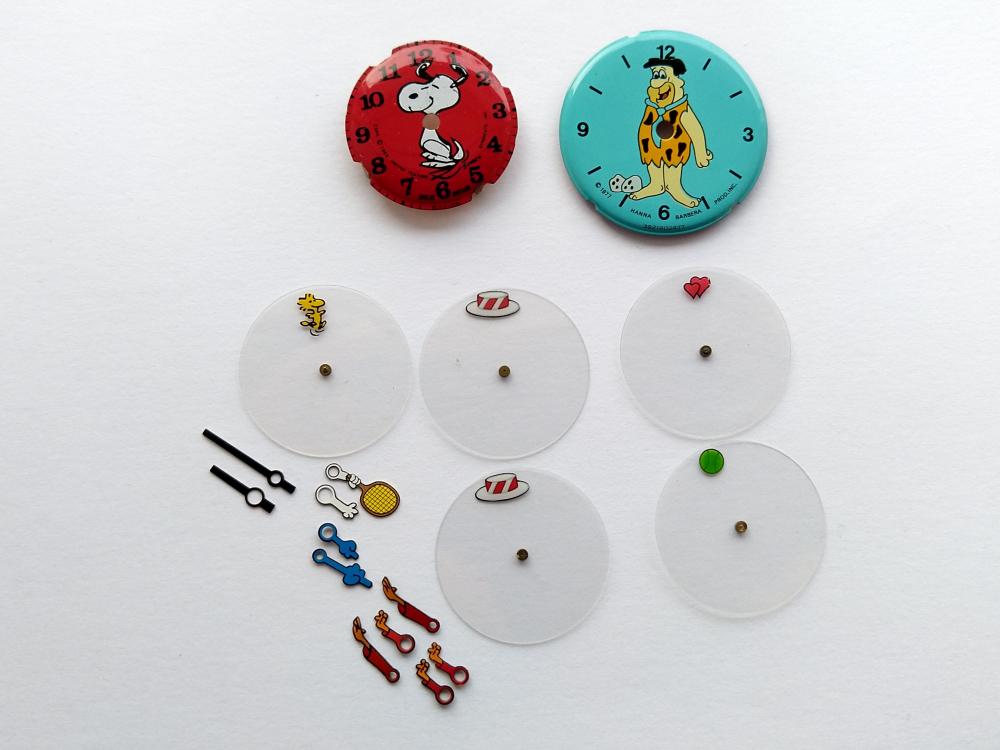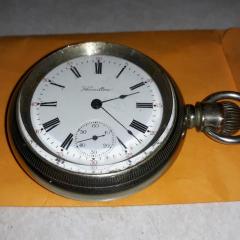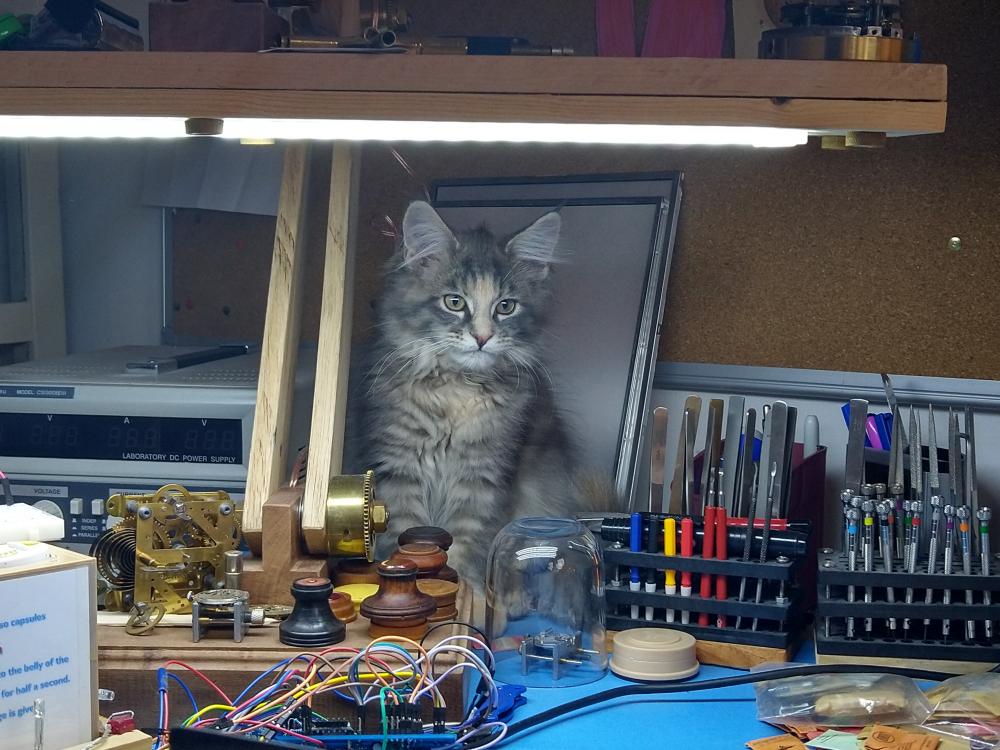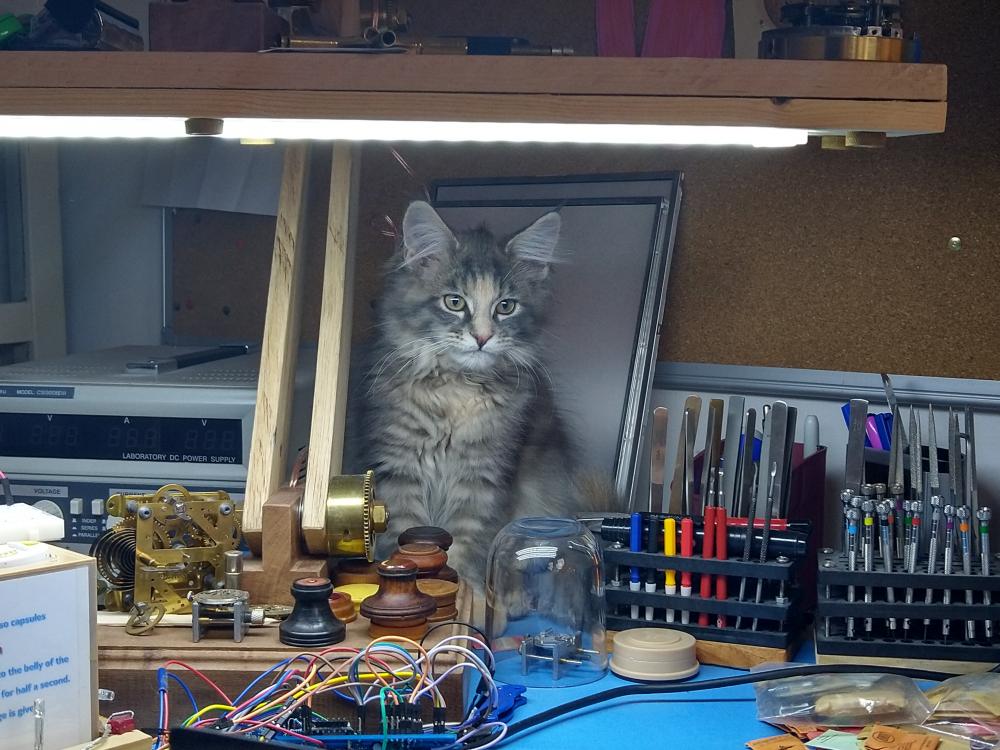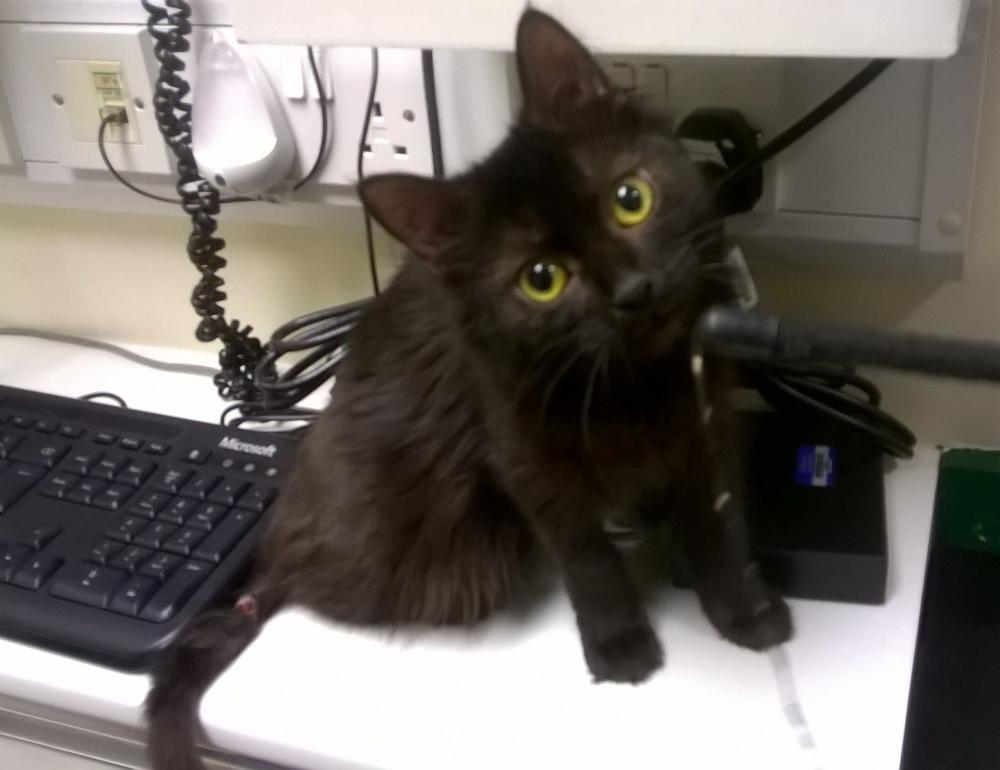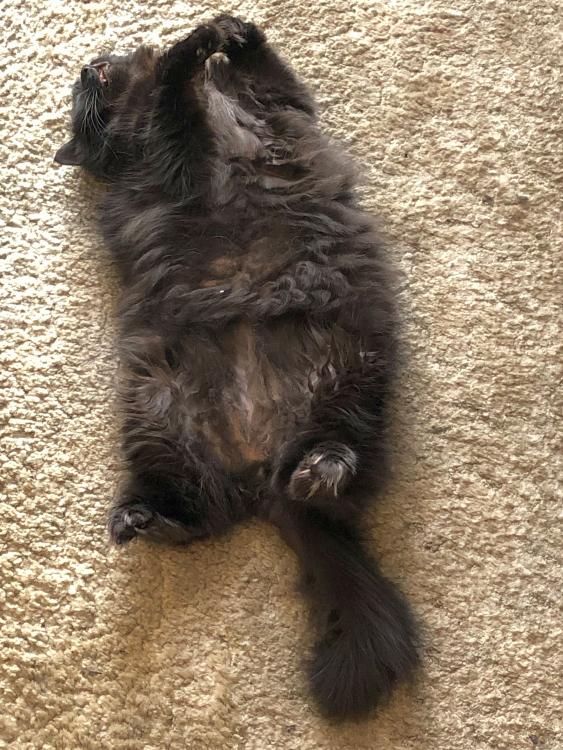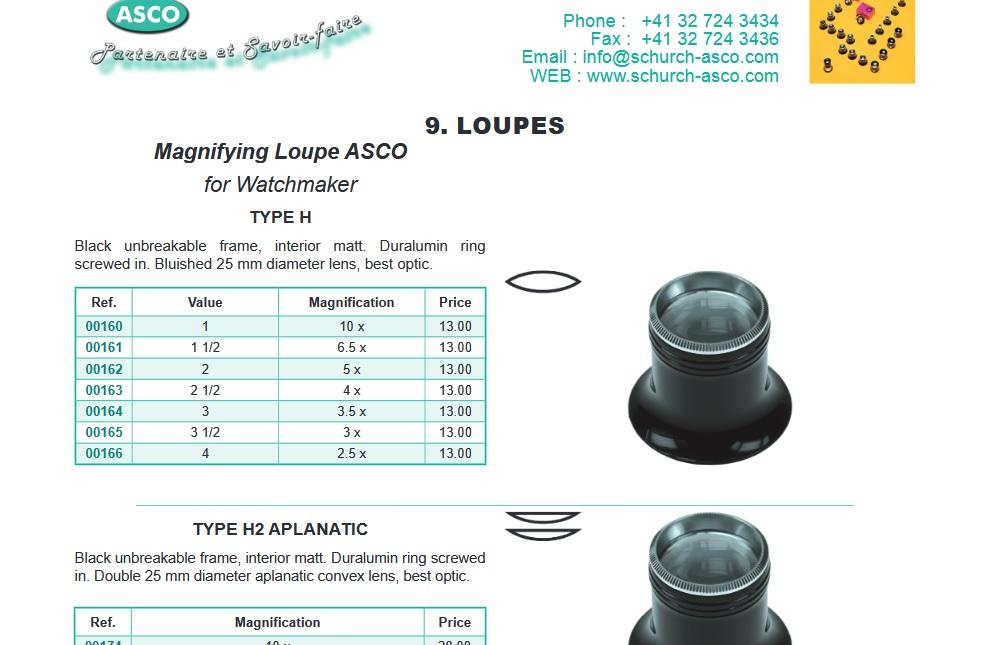Leaderboard
Popular Content
Showing content with the highest reputation on 12/11/20 in all areas
-
Aren’t they gorgeous, lovely colours. Are the pink boots yours? My two have so far ripped holes in one of my net curtains and shredded the inside of one curtain in my sitting room, chewed through one speaker wire, unravelled a toilet roll. I love it, it’s so nice to watch them play. Here they are after a good session of destruction.4 points
-
Looks exactly like the original part, just 6% smaller. I would love to be able to squat like that though.3 points
-
Usually what I like to recommend for beginners is to purchase the Chinese clone of a Swiss pocket watch movement. The same one that Mark uses in his course. Then a timing machine today is inexpensive at an absolute must have. Because then you can take your brand-new movement and check it out. Then practice taking it apart putting it back together and verifying that still running the way it was before you took it apart Then as a minor reminder cleaning doesn't fix all problems. So if you're Seiko watches were running before and you had a timing machine verified that then they should be doing equal or better after cleaning. But if they were having an issue before cleaning may not fix the issue. Then expensive cleaning fluids like professional fluids? They clean really well but you only want to have them in the Cleaning solution for a couple of minutes especially if it has ammonia in it. Professional watch cleaning fluids clean really well that going past a few minutes they start to etch things and that does not make for good running watch. Then looking at your title no amplitude means the watch is totally dead? Low amplitude means what to you? The reason I ask is Seiko's classically have very low amplitudes. It's just the way they are made and if you think cleaning them you're somehow going to make them better it isn't going to happen. This is where it's back to a timing machine you need to have a before and after to see if you're having a problem.2 points
-
A comprehensive history of clock production from 1900 onwards in England can be gleaned from "Clockmaking in England and Wales in the Twentieth Century" by John Glenville and William M Wolmuth Put it on your Christmas list it's a great book.2 points
-
When Elliott started producing platform escapement clocks they used 11 jewel Swiss made escapements from 1920 to 1929, they supplemented the Swiss platform with some 11 jewel escapement made in France between 1924 to 1929 but still mainly used the Swiss, they then switched to English made Rotherham and sons 11 jewel used from 1929 to 1948 during the war they had difficulty with supplies of these platforms due to production going to the war effort so on the odd occasion they used Smiths ABEC platforms. From 1948 onwards they used French l'Epee platforms Starting with an 11 jewel but much later using 7 jewel escapements again during difficulties in post war supplies they would switch to the Smiths platforms. Your platform is from the later period of production and is a 7 jewel L'Epee used from the late 1950's to when production finally ended, there are some more uncommon L'Epee's used in this period as well mainly the L'Epee silent tick which had a extra hairspring attached to the escape wheel arbour this had the effect of dampening the action and reducing the noise produced by the escape wheel interacting with the anchor. These are very robust escapements and there is little difference if any in performance between the 11 and 7 jewel platforms, they do tend to be very loud, I can tell from your video that the amplitude appears to be good because I can see the roller jewel flicking a good way round as it runs.2 points
-
I hope we found a solution which would work for both of us, the window sill next to my work bench: and the King of the House Red, I had to wait with the photo as he likes to be outside, he has now mixed feelings of excitement and probably anger and jealousy. He joined us in March while Smudge joined us at the weekend. When they meet it sometimes ends up with cat fight, but we can see some acceptance there and the playfulness and excitement wins over selfishness more often now. ?2 points
-
You have to realise how Ebay is being used by sellers over the last few years I have come to the conclusion that a very large majority of sellers are buying at auction houses and then listing straight to Ebay, in most cases the speed in which the items go from auction house to Ebay would not allow any testing or servicing to take place, this is particularly true of clocks, I have attended auctions in person and bid online and have seen clocks in which I was the under bidder appear on Ebay the same day. I have bought clocks that the seller has claimed has been serviced when quite clearly they have not been, a lot of sellers will put up descriptions that claim a trained watchmaker/ clockmaker has inspected the clock/watch and it is in sound condition, they will use any B/S they can to make what they are selling more attractive to buyers. In short " You will never find a more wretched hive of scum and villainy" This may be a pretty grim assessment but if you keep that thought at the front of your mind with every listing you look at you wont go far wrong. There are still good bargains to be had but you have to be vigilant.2 points
-
Hi all, I'm relatively new to mechanical watches. Growing up, I always had Timex digital watches. They served their purpose and never gave me problems except the occasional dead battery. As an adult, I've had a couple of nicer quartz watches, but I didn't really know anything about mechanical watches other than the need to wind them every day. It seemed like too much of a hassle to me at the time. However, several years ago, I began learning about automatic watches and really appreciated the complexity of these small machines. I love the idea that they need no batteries, firmware updates, etc. They just tick away. I bought an Orient Mako II as my first automatic watch. It's been a decent watch, but I did have to send it in for service within the first year because it wasn't holding its power reserve. Since then, it's been running well. When I was researching new watches, I came across some watch repair videos on YouTube. I really got hooked. Within a few weeks, I ordered up all of the necessary tools to get started and bought a Tissot PR100 on eBay for a great price because it was advertised as "non running." However, it started right up when I wound it, so I figured it wasn't too far gone. I'm in the disassembly stage with that watch. So far, I haven't found any obvious problems such as missing or broken pieces with the exception of one dial foot, which was broken off but still captured in the movement. After a lot of research (and seeing Mark's recent video on the subject), I decided to solder a piece of copper wire to a very thin piece of brass flashing to make a foot pad. I then used crystal glue to adhere the foot to the dial. I wasn't confident in my soldering abilities and didn't want to risk damaging the dial face. The dial now fits onto the movement, but the true test will be when I go to reassemble the watch. I'm hoping the day/date window won't be misaligned. While working on this project, I found a little Banner manual-wind watch on eBay for practically nothing. It has an AS 984 movement, and I'm assuming it dates back to the 1940s. There's very little information online about this watch, and I haven't even seen another picture of one. I'm attaching a shot of it in case someone here might know more about it. Anyway, I've disassembled that watch and cleaned it. I'm just waiting on an order of lubricants to start putting it back together. However, with the pandemic, I could be waiting a while. Thank you for a providing a forum for beginners like me. I hope to learn a lot here. Take care!1 point
-
Always nice when starting a discussion to have a model number of the watch. Also nice to have pictures just in case we don't recognize the model number. Usually somewhere between the rotor and the mainspring barrel is a wheel Or two. Because I don't actually know which watch you have I don't know which one it is. They usually require special lubrication which varies depending upon which one it is and they should be really clean and functional. It's possible that yours is no longer functional.1 point
-
and don't be disheartened. I know it's tough at the beginning and also if you've had a run of fails. But the highs far outway the lows. Stick with it and you will be rewarded.1 point
-
I find they are a bit like tweezers - you have to try several. Nowadays I mainly use an AF branded loupe for coarse work. Peak microscope with 100x eyepiece for pivot/jewel work.1 point
-
I use a microscope for jewels also. Outside of that, I kinda built up my supplies on a shoestring budget. I have some strong reading glasses for when I just need to see what I'm doing close-up. I also have a headset magnifier that Sarah got for me. I have a couple triplet loupes in my tool chest. But, this'll sound weird, the magnifier I seem to grab the most is a little lens array that I salvaged from an old video recorder. It's even more powerful than any loupe I have. I can even make out cracks in jewels (but I still use the microscope for a better look). It's ideal for initial inspections. But generally, with my astigmatism and other eye issues, I like to keep a variety of things around and grab whichever one I need to, so as to get the view I desire. I need lots of options.1 point
-
Also check that there are no bent teeth on the mainspring barrel or any other wheel. This could cause a random failure.1 point
-
Run the train to make sure everything is running smoothly. Do this without the pallet fork installed. Then install the balance and see if this causes the issue. I had an issue that I thought was related to the hands, etc and it turned out to be the hairspring touching the balance cock because the stud was not fully in place. You need to break down the diagnosis.1 point
-
It Does seem quite fast but the acid test is it keeping good time, I was probably build to operate as is and geared to suit , and as long as the time keeping is accurate that's what counts.1 point
-
This was going to be another "Timex Tuesday" watch, and then I thought I might make it in time for a "Timex Thursday" instead but it took a little more work than I expected, so I guess its a Timex Friday today - 1971 Timex Viscount (model 46660 3271). I lost count of the number of times I had this apart, but now its fully functional and clean as a whistle.1 point
-
1 point
-
I really notice a difference, they just have a nicer undistorted image. In the Schurch catalog they have their H2 loupes that look like regular loupes but are double lens and 10 or 14x; though they have larger lenses I find the distorted field around the central view pretty distracting and uncomfortable for the eye. I have two every day loupes for general work that I go back and forth with, both were made by Wild Heerbrug who unfortanately don't make loupes like this anymore. One is a 3x simple double convex lens, the other a 5x with a pair of plano-convex lenses. Not many makers bothered to use a pair of lenses for 5x; I don't know if it's a true aplanatic but the image is great. Most of the time I just stick with the 3x.1 point
-
found, or finding out, this is very true, indeed. I wonder if they do this intentionally to drive us amateur hobbyists nuts? Same with their movement numbers, model numbers, and every other number combination they can think of...1 point
-
My favorite hi power loupes are Asco aplanetic (the achromats are awesome too). They aren't cheap but they're goood. I use them mostly for checking positioning of staffs on the jacot tool, or a quick check of things at the bench that don't warrant shifting to the microscope. 10x most of the time, 12x sometimes. There are loupes to 20x or more but I think they are a vestige of a time when binocular scopes in the 7-30x range were rare and expensive. I think somewhere I have a 30x loupe but I just got it as a curiosity. I wouldn't work with one though, just for inspection. I've had a microscope over my lathe since I was in school last century, literally couldn't work without it. Ain't no loupe gonna help cutting a Piaget 9P staff at 1.60mm total length haha. http://www.schurch-asco.com/e-shop/catalog/index.php?cPath=114_115_226&osCsid=604fcd0e090a4d4fefae3feb8ce1c5b61 point
-
1 point
-
There is a lot of difference between one manufacturer's x10 and another's. Same goes for any other magnification. In my experience, the whole thing is a bit of a minefield. You buy a handful of different magnifications, and discard the ones which are no use for one reason or another, then guard the good ones with your life, whatever x-factor is written on the box.1 point
-
Exactly so. the basics of tools versus skill and what he produces would prove the point, the best tools in the hands of an idiot are just scrap metal.1 point
-
I have used these for years, x10 to start and x25 to finish teh pivots. Cheap and effective. I also remove one side for work where i am no afraid of scards of metal from the lathe. Check out my lathe videos.1 point
-
By way of an update, I managed to find a donor movement on that well known auction site. A Peseux 320, with Accurist branding. It had the key part I needed plus it provided another movement for me to practice on, without being too nervous about mangling something else. So the second hand is proudly back where it belongs and ticking away nicely. Truly an achievement, for me anyway with my limited skills. Thanks again Poljot, your help's encouraged me on.1 point
-
These tools can indeed bugger up threads, as they were often roughly made. More of a problem with gold balance screws. With a bit of care and some deburring around the inside of the hole though they do work. Same principle as undercutters for chronograph screws, though the main intent of the balance undercutter is to cut inside the head, leaving an invisible retouch and the chrono screw cutter cuts the whole underside. In reality the balance cutters almost always touch the entire surface. In both instances I prefer to use a lathe, with a cross slide, and know exactly how much material I have removed. The pocket watch bow cutter above is on a similar principle, but can form a pivot on a raw bow or reduce the pivot size on an existing bow. I've owned one of the pocket watch cutters since I was in school, and I think I've used it once or twice haha. But it really is the easiest way to put a pivot on a bow. This type of cutter is called a fraise a pivot in French, pivot cutter.1 point
-
Thank you for all the replies. Very insightful and helpful. A follow-on question: my frame of reference for finely made mechanical objects is cameras. In Japan, for instance, for cameras there is (generally) a very different attitude towards used equipment vs. new, and a robust culture of collectors who are very focussed on the cosmetic condition of cameras. Often Japanese eBay sellers are selling cameras that might find value in the US market, but but which might be unfit for collectors in the Japanese camera market. So: is there a similar dynamic in the watch world? For instance, it seems like the Seikos from the 1960's I have seen listed from Japanese sellers seem in better condition cosmetically than the same models from US sellers. Or is this just confirmation bias on my part, and my experience with cameras doesn't really translate? It does seem like international purchases add a degree of risk and expense, as even if one has the right to return a watch, the shipping itself might make it prohibitive to do so.1 point
-
An HMT "Sandeep" joins me with a little light reading material by the fire today. The dial on this is particularly difficult to photograph. It is a rather pleasing bluish grey, but that doesn't really come across on the camera. Digital cameras for some reason seem to struggle with rendering blues accurately. This one is from 1995 which makes it one of the newest watches in the collection, and it actually still looks very fresh.1 point
-
1 point
-
1 point
-
1 point
-
My first workshop was a loft in an industrial building that was also where I lived. I had a big burly grey tiger stripe, Melvin, and was concerned about the open plan and open benches. Also, since the floors were concrete and solid as hell I kept my turntable on the floor. That rambunctious wrestling rascal never set foot on a bench nor touched the turntable! The printer was his true enemy...1 point
-
I suppose it's time to add our little Reeces into the mix here. Reeces was once an unwilling outdoor cat who was left behind by former owners. We took her in, and took care of her vaccinations and her ear mites and fleas, and helped her wounds heal from what was dealt her by other cats. Her favorite place to nap is on our down-filled velvet comforter on our bed. She's a little "nurse cat", in that if she perceives you are unwell she will lead you to the bedroom and meow at you until you climb in bed, then she will curl up upon you and purr until you fall asleep. Or if you get sick in the bathroom, she'll lead another person to you to check on you. You can't be secretly sick here. She has never climbed onto my work bench. One time I saw her considering it, so I gently turned her towards me and looked her in the eye and said in my most serious voice "You must NOT!" She looked back with wide eyes, and seemed to actually understand. And never went up there, even to this day. (That, and she finds the windowsill more interesting anyway.) I've cleaned a lot of odd stuff out of old watches, but so far I've never had to remove one of her hairs. She's a good little cat.1 point
-
1 point
-
Just stumbled upon this thread and had a read though. I don't mind admitting I shed a tear for all your friends that have been lost over the years. I've been there a few times, it never gets any easier. We currently have 4. Lorenz (Lorren), Sierpinski (Spinney), Mandelbrot (Delli) and Rusty. Can you guess the one my wife named? At the beginning of lockdown I made a cardboard tank for the cats. This is now Delli's favourite place to sleep.1 point
-
Welcome to the forum Freddie, you too Buster and good luck both of you, tearing up all the furniture in the house. Rest assured you are the luckiest cats in Great Britton. Regards joe1 point
-
After the loss of my wonderful girl Cookie around 10 months ago. I have taken the plunge and on Friday 6th I received my two 9 week old black and white kittens. So I welcome you to say hello to Freddie & Buster. Freddie is the one with both black ears and very pink nose. Buster is the one with one white ear and his nose is pink & black. Here are a few photos of the little devils.1 point
-
I'm attaching PDFs of each of the numbers you have. But there is a minor problem with the number in that each number refers to a whole bunch a Oilers of different sizes. Then I'm attaching an image of the 7013 which comes in several sizes. his is listed as their precision oiler because the shape is very defined and will supposedly only pick up a very exacting quantity of oil. While the problems with looking at the various Oilers and I have a link that shows that is there also made by a variety of other companies. Then the shape at the end can be different. Personally I find I like the flat end of verses the multi-sited ends that some of them have. I don't even know who makes my favorite oiler other than it just says made in Switzerland I know what I found a style I liked I purchased several of them so I wouldn't have to worry about it. Then conveniently am not finding it but I've seen articles out there of people that will modify the oiler themselves. Another result flattened them's the more flat bill conceivably shapes them and the sums shape that they like or they perceive is somehow better. So if you don't like one try purchasing something else. https://www.esslinger.com/bergeon-30102-watch-dip-oilers-individual/ 7016 C oiler.pdf 5423 oiler 7017 7018 7019 7020.pdf 30102 oiler 7016 M N O.pdf1 point
-
I'm not a fan of kits as most that I have ever seen tend to be limiting or poor quality. The high quality kits tend to be aimed towards strap and battery changing/removing links and general after sales rather than on-the-bench watch repairing. I did create a blog post with some essential "Day 1" tools that are advisable to have on hand when you are creating your tool kit and you may find that useful. https://www.watchrepairlessons.com/2019/09/30/essential-day-1-tools/ Perhaps you could use that as a guide - all of these tools are readily available from many different online sources such as Cousins UK, eBay, Amazon etc etc.. There is also a PDF I have made available which may help you decide on your Day 1 lubricants kit which you can download here: I hope this helps. P.S. - Moving this thread to the tools section1 point
-
Hi Probably ebay will still remain the best supplier look under the heading "spares or repair" there are usually a few cheap casualties to be picked up, Tools can also be picked up, its just a question of keep on looking. Aliexpress is another source of tools , Chinese copies of mainline tools but as other members state they are usually adequate for the job. in fact I have two myself and have found them to be ok. If just starting out look for the Russian makes on ebay Raketa or Wostock (Vostock) usually picked up for a pound or two so no great loss in case of a mishap, good luck cheers.1 point
-
They are pretty useful too I have one in the office. I think the order of usefulness of different magnifiers goes something like this. With my naked eye, I can see the watch and tell the time. With my reading glasses I can appreciate the texture of the dial, and do simple tasks, like fit a winding stem and hands. With an additional pair of glasses I can lift and re-fit a balance, work with most bridges, align pivots and so forth. With the illuminated desk magnifier and my reading glasses, and some fine tweezers and a couple of pins I can do more delicate work, like sorting out hairsprings. With 2 pairs of 3.5 reading glasses (or a head magnifier or better still the 10x loupe) I can examine the general state of the pivots, judge the level of dirt on the jewels. With my optical microscope at its lowest magnification I can examine the actual wear on the pivots, jewels etc. With the next stage, I can see the surface detail of the metal finish on individual watch teeth, and the smallest of debris, and globs of gunk trapped between the teeth. The maximum optical magnification lets me see the structure of the fungal spores on the surface of the dial. ... and finally, with my naked eye I can see that this work area is in serious need of a tidy again. Fortunately this is generally *not* where I tend to work on the delicate stuff, but I know what my next task is.1 point
-
Eye loupes have a sort of standard progression of working distance/magnification. If you look at the image, the "value" is the working distance in inches. Your 10x has 1 inch, which is pretty tight, and you'd only use that for inspection not general work. Most people use something between 2.5x and 5x for general work, I mostly use a 3x. As you go to higher powers it becomes more critical that the loupe be at the right distance, as your eye compensates for the little variations and the weaker the easier, so higher powers can be fatiguing. If you get an unmarked loupe in an Ebay score or flea market, you can determine the focal length by focusing the sun (like we did as kids with a magnifying glass) and measuring the distance from lens to object. This is essentially the same as the working distance, and then you know the power.1 point




